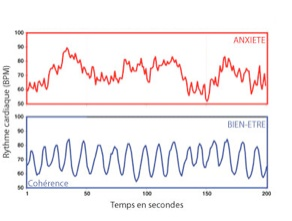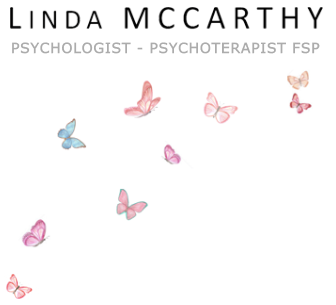
The very center of your heart
is where life begins. The most
beautiful place on earth.
Rumi
is where life begins. The most
beautiful place on earth.
Rumi
Cardiac coherence
Cardiac coherence is a biofeedback technique that allows us to act on autonomous bodily functions over which our willpower has no control, such as the heart rate.
This concept comes from medical research in neuroscience and neurocardiology. It appeared in the United States about 20 years ago, when its beneficial impact on stress management was highlighted by the HeartMath Institute.
At the physiological level, the principle of cardiac coherence consists of synchronizing our respiratory rate with that of the heart and the two branches (sympathetic and parasympathetic) of our autonomic nervous system.
Cardiac coherence leads to an increase in the variability of the heart rate, the effects of which are the following:
Physiologically:
- Decrease in cortisol, the stress hormone secreted by the adrenal glands. The level of cortisol decreases by 20 to 25% during a cardiac coherence exercise
- Increase in the level of DHEA (anti-aging hormone)
- Increase in immunoglobulin A (IgA), improving immunity
- Modulation of serotonin and dopamine, neurotransmitters playing a role in mood and sleep
- Improvement of hormonal balances (glycemia, insulin)
- Lowering of blood pressure and increase in alpha brain waves (waves of light relaxation)
Psychologically:
- Increased performance, both physical and intellectual
- Distancing and letting go of stress generating factors (first effect perceived after 15 days of regular practice)
- Mental clarity
- Increase in optimism
- Improved memory capacity
When we are in cardiac coherence, we obtain an image such as the second image below: this person is serene.

It is a matter of learning to bring your heart rhythm into “coherence” and avoid the “chaos” in which it usually is. Different studies have established that emotions such as anger, anxiety, sadness and even trivial worries cause the greatest drop in cardiac variability and sow chaos in our physiology. Conversely, other studies have shown that emotions such as joy, gratitude and love are the ones that most promote coherence. Within seconds, these emotions induce a coherence wave that is immediately apparent on the heart rate recording. Coherence – which can be learned with a few simple tips and biofeedback tools – allows one to rebalance the body’s physiology, to have better control over one’s emotions and to learn to generate pleasant emotional states.
The software measuring cardiac variability allows us to visualize to the second the influence of our thoughts on the degree of coherence. When we focus our attention on the heart and on inner well-being, we see a phase change and coherence increases in the form of regular and smooth waves. On the other hand, as soon as we allow ourselves to be distracted by unpleasant thoughts and preoccupations – which is the normal tendency of a brain left to its own devices -, within a few seconds, coherence decreases, and chaos takes its place. If we give in to anger, then chaos increases explosively and immediately, and the line on the screen draws a mountainous and chaotic horizon. Biofeedback software allows us to instantly visualize our level of coherence and thus to accelerate learning.
